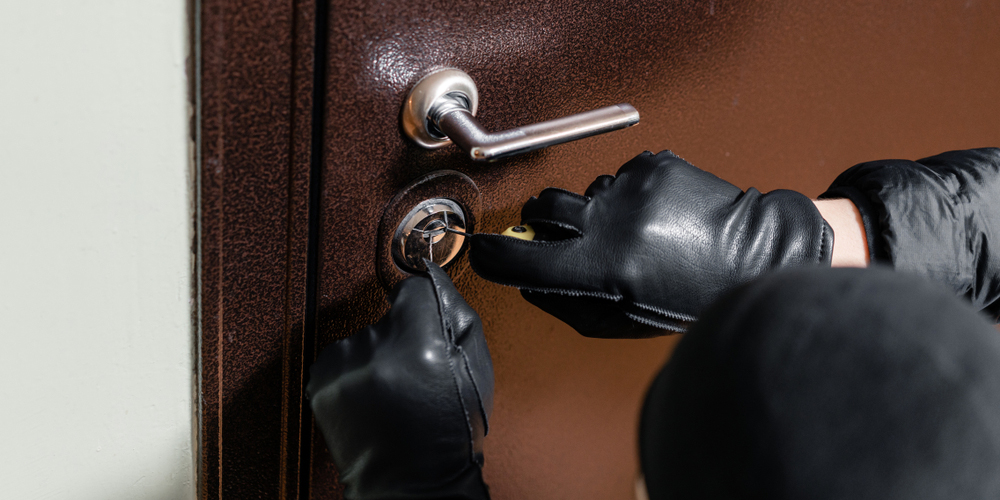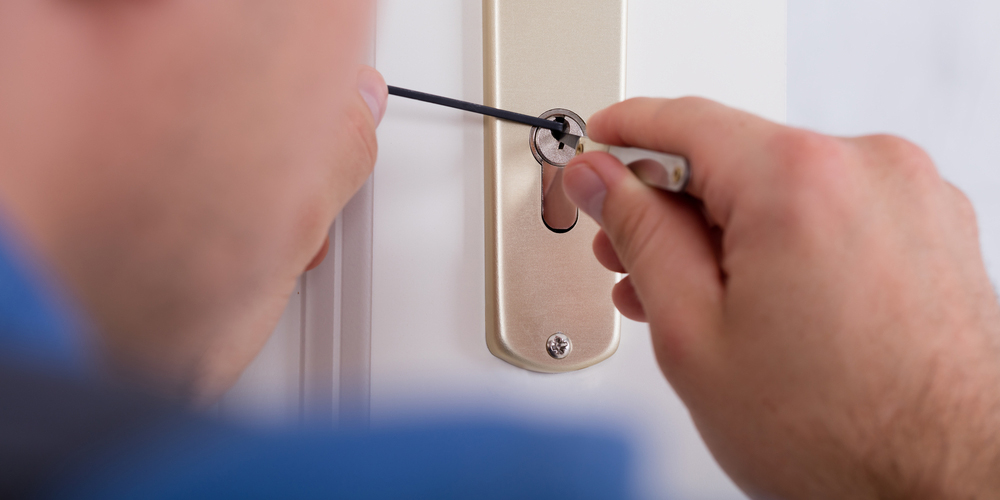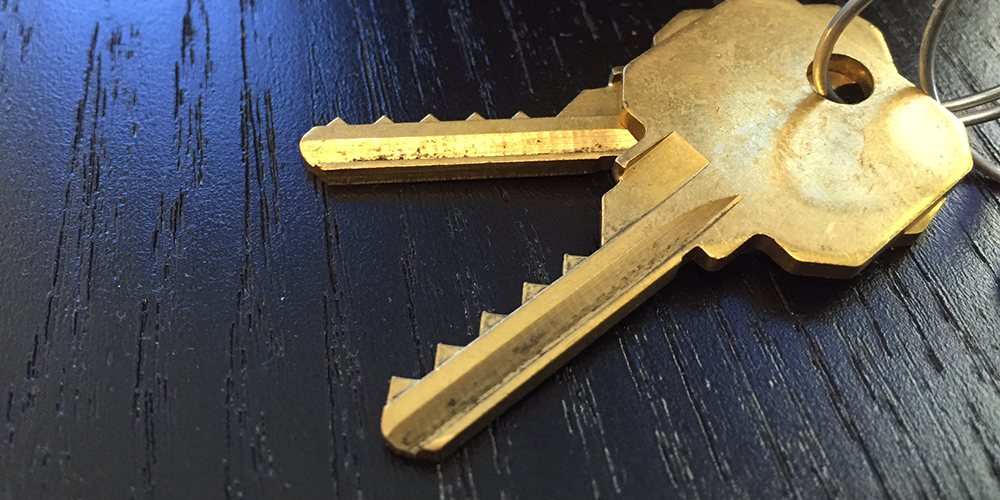Lock Blog
A resource for consumers, locksmiths, and security professionals
A resource for consumers, locksmiths, and security professionals

Although it is true that most thieves do not pick locks, it is inaccurate to say that no burglars pick locks. This is a method of entry that unscrupulous people use to gain illegal entry to a property. Perhaps you have taken the steps to burglar your proof doors, and a motivated thief’s only remaining option is to pick your locks. It could also be the case that covert entry serves a criminal’s purpose better. The fact remains that you suspect your locks have been picked. So how do you find out for sure?
The main forms of lock picking include:
Lock picking is a covert form of entry, and rarely leaves clearly visible indications that can be detected without forensic investigation. A forensic locksmith can take the lock apart and look for markings on the keyway, pins, actuator, and pin chambers. You can try to look for these indications yourself, but without professional oversight, there is no way to make a conclusive declaration as to whether or not a lock has been picked.
Certain law enforcement officers may have experience or training, which allows them to identify certain signs of forced entry. However, it is unlikely that police officers will have the background in forensic locksmithing it would take to determine whether or not a specific lock has been picked. Forensic locksmiths assist law enforcement in making these determinations but determining whether to involve this type of expert is at the discretion of the investigator/department.
If it is not obvious that the perimeter was breached via a broken window or door, then look for signs that the home is not how you left it. There should be indications that drawers were opened and rummaged through, as well as valuables being missing (especially electronics). Without these clear signs of a break-in, you can have a professional forensic locksmith check for evidence of covert entry such as lock picking.
Every lock can be picked, but some locks have not been picked yet or are difficult enough to pick that most criminals will not make the attempt. Such near unpickable locks include the Abloy Protec2 and Evva MCS. Other high-security lock manufacturers that are likely to send lock picking thieves running for the hills include Mul-T-Lock and Medeco due to their reputations, although they have their weaknesses.
Picking a lock once is extremely unlikely to damage a lock. This is why locksmiths prefer to pick a lock open, so the hardware does not need to be replaced after service. However, repeated picking attempts (even when successful) can potentially damage the lock. This is why locksport and hobbyist lock pickers tell their communities not to pick locks that are in use.
Lock picking describes a classification of methods that can open locks without the proper key. There are many ways to unlock a door without a key, but lock picking also denotes that the lock is manipulated via the keyway, and does not include attacks focused on the door, latch, or bolt. Additionally, lock picking is non-destructive and is therefore covert.
Covert entry means the method is detectable through forensic evaluation but is otherwise imperceptible. For our purposes here, certain covert and surreptitious forms of entry such as decoding and lock impressioning will be excluded from the designation of lock picking.

Standard lock picking methods include raking and single pin picking. Although they are distinctive from one another, from a mechanical understanding, they work on the same principle. Raking being the less precise application of the underlying methods of single pin picking. But both processes come down to the use of two tools, a pick, and a tension tool. The tension tool is placed at the top or bottom of the keyway and torques the plug of the lock so the internals can be manipulated by the pick.
These methods are the default depiction of lock picking in pop culture and are what most people picture when you say lock picking. We can think of this as standard lock picking. Most locks use a pin tumbler system, so the internals being manipulated are likely to be ‘pins’. We don’t need to get into the process any more than that because we have already covered what parts of the lock are going to show signs of wear as a result of this type of lock picking.
Without taking the lock apart, you can investigate the top and bottom of the keyway for small scratches and gouges that suggest the use of a tension tool. A key does not interact with the lock in a way that leaves these subtle, yet distinctive markings. With the lock taken apart, the pins can also be investigated for scratches and tiny cuts.
Old locks will have very smooth pins from the key acting like a pumice stone, grinding the pins down with every insertion. New locks will have pins with milling marks and dents from imprecise manufacturing, but these do not look like scratches left by a lock pick. The last pin (furthest back in the keyway) in a non-picked lock should also have less wear than the other pins because the key interacts with the final pin the least.
If you need to improve your apartment security but cannot upgrade your locks, you still may be able to re-pin your lock. This will not change which keys have access, but will instead replace standard pins with security pins of a similar length. This creates no change that will disturb the property manager or landlord. All that will be different is that your lock is less vulnerable to lock picking. But if you can upgrade to a higher security lock, consider using something other than a standard pin tumbler lock.
Non-standard lock types can include keyless door locks, which provide no keyway to exploit. They may be vulnerable to other exploits, but every lock is. However, some locks have no known lock picking vulnerabilities yet, and those provide a similar level of anti-picking security. Even a lock can be picked, something like the Mul-T-Lock MT5+ core uses a complex key with an active element that will stop any lock picking amateur in their tracks.

Bumping a lock requires a bump key that fits the particular lock brand and model, along with some type of blunt object to strike the key (therefore bumping the key). The kinetic energy of the blow transfers to the bump key and finally to the pins. Causing the pins to momentarily jump. The instant the pins jump, the key is turned with the hopes that nothing will be caught at the shear line. It is extremely imprecise and often requires multiple attempts, which leaves more evidence.
This is a method of entry that only works on pin tumbler locks. It will not work on disk detainer locks and most car locks (sliders and double-sided wafer locks). Certain pin tumbler variations such as cruciform locks and tubular locks can be considered bump-proof for the purposes of this discussion. And most high-security pin tumbler locks that use security pins are unlikely to be vulnerable to this exploit. But if the criminal didn’t know that, there is a chance they tried in vain to open the lock.
Lock bumping requires a lot of force, which leads to more visible forms of superficial damage. The dents and scratches on the pins will be larger and deeper than the ones left by traditional lock picking. When you take the lock apart you will be able to see very distinct and relatively deep markings on the pins. There may also be serrations around the sides of the pins where they were caught on the shear line without clearing it.
Similar to the sides of the pins getting cut by the pin edges of the pin chambers, the chambers can also become deformed by the pins. You can see nicks on the side of pin chambers of locks that were over-torqued during one or more unsuccessful bumping attempts. There is also the chance that the face of the lock will also be deformed by the bump key slamming into it repeatedly. However, this is simple for criminals to prevent and is the most common anti-forensic measure, so it is the least likely sign of bumping that you will see.
Preventing lock bumping looks extremely similar to the measures taken to prevent raking and single pin picking. This is not a coincidence, as all of these forced entry methods operate off the same principles. However, lock bumping is more effectively prevented by things like security pins and complex keys. Due to the less precise nature of bump keys, additional internal security can make a standard pin tumbler as good as un-bumpable.
And whereas single pin picking can open any existing lock, given the right tools, training, and time, bump keys cannot open every lock. There are objects similar to bump keys such as jiggle keys and tryout keys used to open different key types, but those will also be rendered useless with security pins equivalents and complex keys.
It is more likely for a criminal to learn how to bypass a particular lock than learn how to pick a lock in the traditional sense. This is because bypasses work the same way each time, with close to a guarantee of success. Bypasses take on a variety of forms, but all work off the principle of exploiting an unintended design flaw. These design flaws allow one to ignore security pins, warding, and every other protection and access the actuator of the lock and make it open.
The actuator is the part of the lock that moves to allow the free movement of a spring-loaded latch, or retracts and throws a bolt. There will be a tailpiece or cam on the back of the lock cylinder that rotates as the proper key rotates the lock cylinder. In some locks, the actuator or cam can be moved to open the lock without rotating the cylinder. This is called a bypass.
You are going to have to take a lock apart to check for signs of bypass manipulation. Markings on the keyway or face of the lock are exceedingly rare. If you see signs of unusual keyway stuffing, chances are a bypass method was not used even if the lock was picked. Bypasses by their very nature interact almost exclusively with the lock’s actuator, tailpiece, cam, etc. All of these components are inside the lock.
With the lock disassembled, all relevant components can be assessed for gouges, cuts, and non-standard markings. Normal use should not leave scratches with various depths and angles. If something is grinding against these parts during standard use, it should be making contact consistently and predictably. If a bypass tool is being used, it is going to miss its mark a few times and fumble around, in a way your key would not. This leaves unique marks.
Locks that can be bypassed only provide the illusion of security. Any security grade they hold or testing they have the distinction of passing, does not matter. Beyond what is tested and accounted for, a weakness has been discovered and the lock no longer provides the intended level of security. That means the best way to prevent a lock bypass is to purchase a lock that does not have a documented bypass. If you find that your lock is vulnerable to a bypass, changing locks is highly recommended.
Some lock brands take inventory of bypasses as they are discovered and offer anti-bypass additions that can be installed to existing locks. If they do not, third parties and locksmiths may step in to fill the gap in the market. But be careful with these “solutions”, as bypass tool manufacturers are also likely to be looking to maintain their sales and will attempt to work out a bypass for the anti-bypass. The best way to secure a door with a bypass is to get rid of the lock as it is likely to be continually targeted by communities that are focused on bypasses.
After taking in all of this information, it is unlikely you will have the simple answer you were looking for. That is because discovering if a lock was picked open is no simple task. But what may give you some peace of mind is considering the following:
Often there will be no way for you to know if your lock was picked unless you get the professional opinion of a forensic locksmith. But if you can see any markings on the face of the lock that suggest repeated impacts or tool markings, it may be worth investigating, provided there is evidence of a crime. But even with proof of a crime, the burglar did not necessarily pick the lock.
If it is clear the lock was opened, there is a chance this was done with an existing key. If you have improperly hidden your spare house key, this may have been used. Someone with access to a key may be responsible, or an unauthorized copy of the key could have been made. You should consider changing locks, instituting better key control, or switching to locks that use patented keys. If the proper key is used, there will be no sign lock picking.
As many comment section experts are quick to point out, there are often easier ways to open a door than picking a lock. If there are openings like dog doors or insecure windows, it is possible to leave no signs of entry while never manipulating the lock or using a key. Go through the steps to burglar-proof windows on at least the first story of the building. Use double sided deadbolts on exterior doors next to non-locking pet entrances.
If you suspect that your security is being undermined covertly, it is important to determine how it happened so you can protect yourself in the future. The most important step in responding to burglary is preventing something like this from happening again. Certain locks are always going to be vulnerable to lock picking such as old steamer trunk locks or filing cabinet locks, but your door locks can be protected from lock picking to the point of being unpickable.
Category: Crime, Lock Picking, Safety & Security